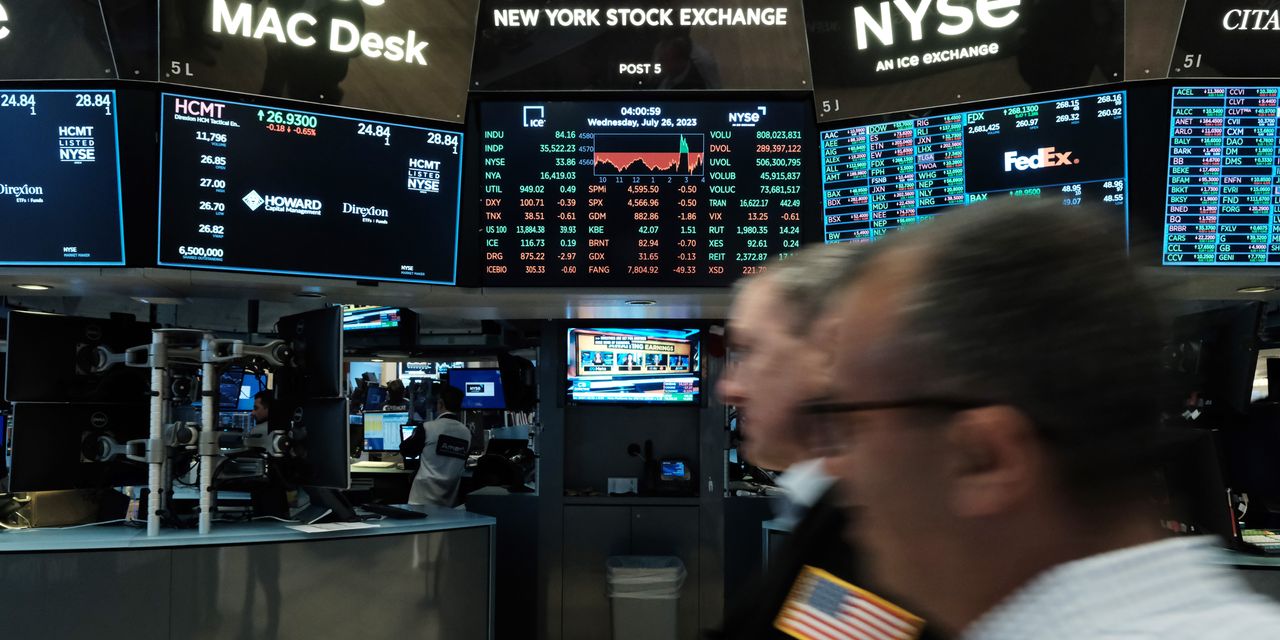How much better can get it?
The high valuation and hot momentum that defines many stocks, and the broad market, is creating a conundrum for investors.
The S&P 500 index is up about 21% this year, and a number of stocks are up more than 100% over the same period.
Rising interest rates were supposed to be bad for equities, but every successive hike has turned Nietzsche’s familiar dictum—that which does not kill me makes me stronger—into a vitamin tonic for a bull market.
Yet, buying stocks at these levels often feels like it requires an evangelical faith in the Greater Fool theory—the idea that someone will always pay more than you for whatever you bought.
The challenge thus becomes finding opportunities that aren’t widely recognized. Consider the
Select Sector Financial SPDR
(ticker: XLF), resplendent in controversy and underperformance. The exchange-traded fund includes 72 leading stocks in the financial services, insurance, banks, capital market, mortgage real estate investment trusts, and consumer finance industries.
The financial-sector proxy is up just 4% this year on concerns that rising rates may push the economy into a recession, which is bad for bank business.
But it is reasonable to think that bank executives might figure out how to prosper from lending money at higher rates and paying depositors low rates.
With XLF at $35.31, long-term investors can consider buying the December $38 call and selling the December $33 put.
The risk-reversal strategy—that is, selling a put and buying a call with a higher strike price but similar expiration—pays investors about 10 cents for agreeing to buy XLF at $33 and to profit from gains above $38.
During the past 52 weeks, the Financial Select SPDR ETF has ranged from $29.59 to $37.11.
The December expiration was chosen to provide time for bank executives to persuade investors that they can prosper in a higher-rate environment.
The December expiration also covers several critical meetings of the Federal Reserve, including the August gathering at Jackson Hole, Wyoming, and Federal Open Market Committee meetings that are scheduled for September, November, and December. There is an expectation in the market that the Fed might raise rates perhaps once more this year.
The risk to the XLF risk reversal is that the investment thesis is wrong and the financial sector sharply declines. There are some expectations in the futures market that the Federal Reserve may lower interest rates sometime next year, but it is difficult to imagine that interest rates will ever return to the historically ultralow levels of recent years. Higher rates should boost bank earnings.
Another risk to the strategy is if economic data sours and investors suddenly change their collective minds the U.S. economy’s ability to easily digest higher rates. Should investors stop believing in a so-called economic soft landing, the financial sector could lead the market lower.
If XLF does succumb to those risk factors, or other pressures, investors would have to buy XLF at $33 or lower, or they would have to adjust the position to try to avoid buying the exchange-traded fund.
Of course, buying XLF near the 52-week low is arguably not a bad outcome. Banks are a perennial fact of life. Everyone always needs places to deposit their money, and economic cycles are likely to ultimately once more favor the sector.
Steven M. Sears is the president and chief operating officer of Options Solutions, a specialized asset-management firm. Neither he nor the firm has a position in the options or underlying securities mentioned in this column.
Email: [email protected]
Read the full article here





